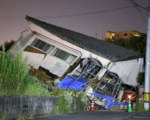Mount Spurr, an active stratovolcano located 130 kilometers west of Anchorage, Alaska, has been showing signs of increased volcanic activity. The Alaska Volcano Observatory (AVO) has reported a series of unusual seismic events, including an uptick in earthquake frequency, the melting of snow and ice on its slopes, and heightened emissions of carbon dioxide and sulfur dioxide. These changes point to potential magma movement beneath the surface, a signal that an eruption could be on the horizon. The AVO now suggests that the current signs of unrest indicate a higher likelihood of eruption, which marks a shift from previous assessments that considered both dormant and eruptive phases as possibilities.
Scientific monitoring of the volcano has intensified in response to these developments. According to Matt Haney, Scientist-in-Charge at the U.S. Geological Survey (USGS), there is increasing concern that the unrest at Mount Spurr could lead to an explosive eruption. Notably, the volcano has experienced eruptions at its Crater Peak vent in 1953 and 1992, both of which resulted in ash plumes that reached significant altitudes. The last eruption at the summit itself is believed to have occurred over 5,000 years ago, suggesting that magma may not be able to breach the solidified rock in that area. However, recent observations indicate that the activity is escalating.
Historical eruptions at Mount Spurr, particularly the ones in 1953 and 1992, have left significant impacts on nearby regions, including Anchorage. The 1992 eruption sent ash plumes more than 15,000 meters into the atmosphere, with the city receiving an ashfall of 3.1 millimeters. Similarly, the 1953 eruption led to an ash deposit of 6.4 millimeters in Anchorage. These past events have prompted heightened vigilance, as scientists closely monitor current signs of volcanic unrest, particularly the increased emissions and seismic activity.
If magma continues to move toward the surface, scientists predict that volcanic tremor will likely become the next major sign of an impending eruption. Unlike the short seismic bursts observed in recent months, volcanic tremor is characterized by continuous shaking, which can last from minutes to days. Historical eruptions in Alaska, such as the 1992 Mount Spurr eruption and the 2009 eruption of Mount Redoubt, were preceded by long periods of tremor. As monitoring continues, any onset of tremor would be a key indicator that Mount Spurr’s activity is intensifying and could soon lead to an eruption.
















